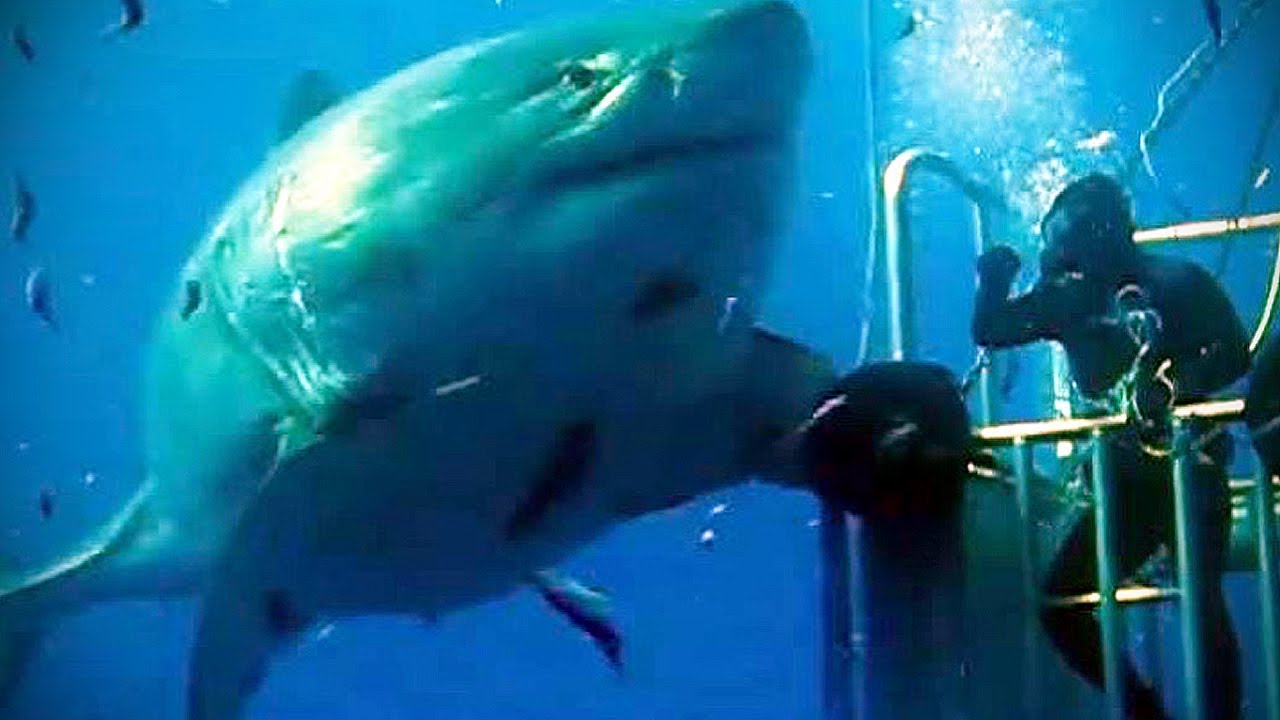
Great white shark lair in Pacific Ocean discovered by scientists.
A scientific mission into the secret ocean lair of California’s great white sharks has provided tantalizing clues into a vexing mystery — why the fearsome predators spend winter and spring in what has long appeared to be an empty void in the deep sea.
A boatload of researchers from five scientific institutions visited the middle-of-nowhere spot between Baja California and Hawaii this past spring on a quest to learn more about what draws the big sharks to what has become known as the White Shark Cafe, almost as if they were pulled by some astrological stimulus.
The sharks’ annual pilgrimage to the mid-Pacific region from the coasts of California and Mexico has baffled scientists for years, not just because it is so far away — it takes a month for the sharks to get there — but because it seemed, on the surface, to be lacking the kind of prey or habitat that the toothy carnivores prefer.
But the researchers made a remarkable discovery. Instead of blank, barren sea, the expedition, led by scientists with Stanford University and the Monterey Bay Aquarium, found a vast community of tiny light-sensitive creatures so tantalizing that the sharks cross the sea en masse to reach them.
The primary lure, scientists believe, is an extraordinary abundance of squid and small fish that migrate up and down in a little understood deep-water portion of ocean known as the “mid-water,” a region skirting the edge of complete darkness that could provide an immeasurably valuable trove of information about the ocean ecosystem and climate change.
“The story of the white shark tells you that this area is vitally important in ways we never knew about,” said Salvador Jorgensen, a research scientist for the Monterey Bay Aquarium and one of the expedition’s leaders. “They are telling us this incredible story about the mid-water, and there is this whole secret life that we need to know about.”
The researchers’ focus, a 160-mile-radius subtropical region about 1,200 nautical miles east of Hawaii, was essentially unknown to science until marine scientist Barbara Block, of Stanford University’s Hopkins Marine Station, began attaching acoustic pinger tags to white sharks 14 years ago.
Block discovered that the local sharks, known as northeastern Pacific whites, feed on elephant seals and other marine mammals in the so-called Red Triangle, between Monterey Bay, the Farallon Islands and Bodega Head, from about August to December. She also tracked their movements into San Francisco Bay and around Guadalupe Island, in Mexico.
But then, each December, the acoustic tags showed a mass movement out to sea that was as confusing to the researchers as it was surprising.
Block found that the sharks were leaving the food-rich waters along the West Coast to spend spring and most of the summer in a patch of open ocean about the size of Colorado, a place that looked in satellite images like an empty, oceanic Sahara desert.
She named it the White Shark Cafe even though she wasn’t sure whether the sharks went there for food or sex.
To find out, Block organized the monthlong expedition in April and May aboard the Schmidt Ocean Institute’s research vessel Falkor, which was equipped with high-tech instruments, sail drones and a remotely operated submarine. Last fall, before departure, her team of scientists tracked down 36 local sharks using acoustic signals and fitted them with high-tech satellite monitoring tags with locator beacons programmed to pop off and float to the surface during the cafe expedition.
The scheme worked. The researchers got data from 10 of the 22 tags that floated up and signaled the Falkor that they had detached and were bobbing around ready to be collected, an exercise that Jorgensen called “a white shark treasure hunt.” The scientists also obtained recorded information on shark movements and behavior over the previous months from six other great whites through radio uplinks. The rest only transmitted their location or were not recovered.
The data on the recovered tags documented highly unusual diving behavior at depths scientists had rarely before seen in white sharks.
On the way to the cafe, the sharks made periodic dives 3,000 feet deep, a surprising discovery given that the big fish normally wouldn’t be able to stay warm enough to digest food in such cold, pressurized depths. The sharks, researchers found, were using warm circular currents to get down the water column, suggesting they were following prey. Still, it isn’t clear what they were eating.













